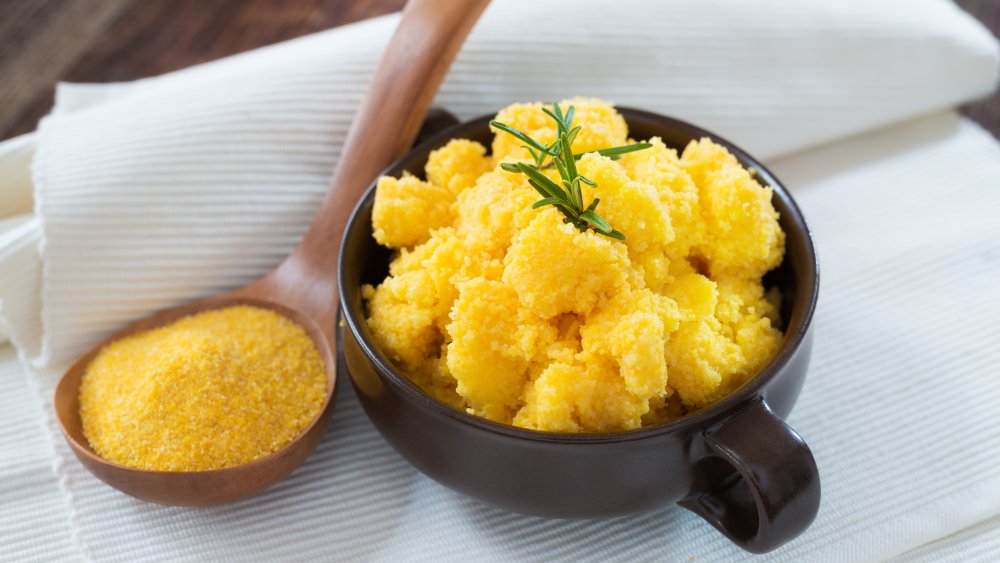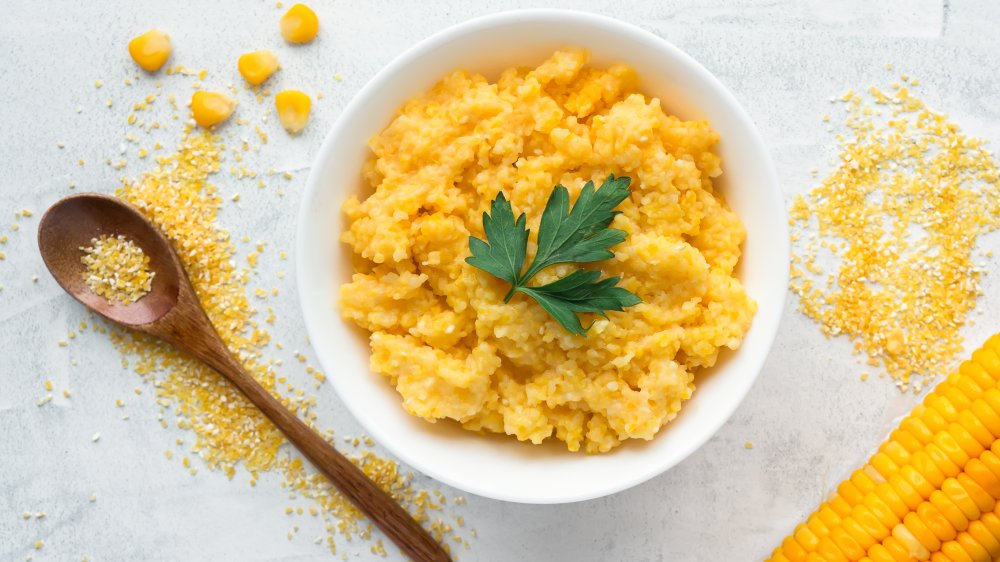The Real Difference Between Cornmeal And Polenta
Cornmeal is a must for all-American favorites like cornbread and hush puppies, dusts pizza crusts for extra crunch, fortifies deep-fried foods as a breading, and forms the base for tortillas. And, yes, it may be used to make polenta — but the two shouldn't be confused and the terms aren't interchangeable.
In essence, white or yellow cornmeal is made from ground and dried field corn, which is starchier than the familiar corn-on-the-cob type (via Fine Cooking). According to the North American Millers Association, whole-ground or stone-ground mills usually make cornmeal from whole-ground white corn, which removes minimal hull and germ. More refined cornmeal is "ground with steel rollers," eliminating "most of the hull and germ" to improve its longevity on the shelf (via Bon Appetit).
Polenta, on the other hand, has a deep history in northern Italy. The Spruce Eats notes that corn-based polenta has been popular since the introduction of this crop in the 16th century; traditionally considered "a food for the poor," it's a dish based on boiled cornmeal (typically, yellow maize).
Therefore, as Chowhound breaks down, "polenta is a dish, and cornmeal is an ingredient — often the main ingredient in that dish."
Polenta and cornmeal varieties
Chowhound explains that polenta was cooked in the past with other grains as a base — think chestnut flour, buckwheat meal, chickpea flour, or coarse-ground rice — and is made by cooking them in liquid until soft, with possible additions like butter to ramp up the flavor factor. Today, polenta recipes often list cornmeal as the main ingredient, but products that are specifically labeled as polenta pack a greater textural punch (via Real Simple).
This variability comes down to the coarseness of the grind. Bon Appetit reports that cornmeal is available in fine, medium, and coarse textures — the coarse variety being most appropriate for polenta.
Likewise, there are various types of polenta: coarse-ground, finely ground, instant, white, and precooked in a tube. Echoing the versatility of cornmeal itself, polenta can star in a slew of dishes, both sweet and savory, according to Real Simple — in its creamy cooked form; hardened into cuttable slabs, as a base for pizza or sauce-topped slices; or even incorporated into cakes and cookies.

